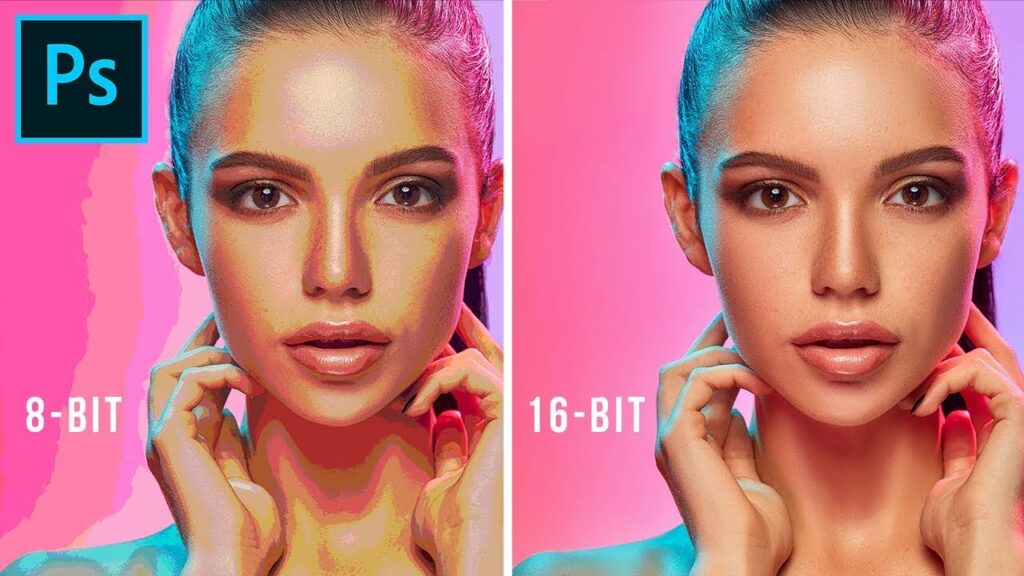Unveiling the Pinnacle of Pixel Precision: The Profound Benefits of Working with 16-Bit Images in Photoshop

In the realm of digital artistry and image manipulation, the choice of bit depth is a critical determinant of the depth and fidelity with which colors are represented. While 8-bit images have long been the standard, embracing the power of 16-bit images in Photoshop elevates the potential for nuanced creativity and unparalleled precision. In this extensive exploration, we uncover the profound benefits that come with working in the realm of 16-bit images, unveiling a world where color gradients are smoother, details are richer, and the artist’s vision is meticulously preserved.
I. The Essence of Bit Depth:
1. Understanding Bit Depth:
- Bit depth refers to the number of bits used to represent each pixel in an image. In the context of digital images, common bit depths include 8-bit and 16-bit. While 8-bit images offer 256 levels per channel, 16-bit images provide a staggering 65,536 levels, allowing for significantly more color variations.
2. Channels and Precision:
- In an image, channels represent color information. In the RGB color model, there are three channels: Red, Green, and Blue. Each channel in a 16-bit image can accommodate 65,536 shades of intensity, providing an expansive palette for color representation.
II. The Profound Benefits of 16-Bit Images:
1. Extended Color Depth:
- The primary advantage of 16-bit images lies in their ability to represent a vastly extended range of colors. This results in smoother color gradients, reduced banding in subtle tones, and an overall enhancement of visual quality.
2. Preservation of Details:
- When working with high-resolution images or images containing intricate details, 16-bit depth excels in preserving subtle nuances. Fine textures, shadows, and highlights are rendered with greater accuracy, ensuring the integrity of the artist’s vision.
3. Mitigation of Color Banding:
- Color banding, the visible stepping between different colors, is significantly reduced in 16-bit images. This is especially crucial for gradients and smooth transitions, where 8-bit images may exhibit noticeable artifacts.
4. Enhanced Editing Flexibility:
- The extended bit depth provides a cushion of information that proves invaluable during the editing process. Whether adjusting exposure, contrast, or color balance, 16-bit images offer greater flexibility without the risk of introducing artifacts or degrading image quality.
5. Optimal for High-End Printing:
- For projects destined for high-end printing, such as large-format prints or professional publications, 16-bit images shine. The additional color information ensures that the printed output faithfully reproduces the richness and subtleties of the original image.
III. Navigating Photoshop’s 16-Bit Environment:
1. Setting Document Bit Depth:
- In Adobe Photoshop, the bit depth of a document can be set when creating a new file or by converting an existing image. This choice dictates the level of color precision throughout the editing process.
2. Editing in 16-Bit Mode:
- Once a document is set to 16-bit depth, the full spectrum of colors becomes available for editing. This mode is particularly advantageous when applying adjustments, filters, or intricate retouching that demands the utmost precision.
3. Understanding File Size Implications:
- It’s crucial to note that 16-bit images have larger file sizes compared to their 8-bit counterparts due to the increased amount of data per pixel. This consideration is particularly relevant when managing storage resources and sharing files.
IV. Real-World Applications and Best Practices:
1. Professional Photography:
- For photographers, especially those engaged in capturing high-dynamic-range scenes, 16-bit images become a preferred choice. The ability to preserve details in highlights and shadows is invaluable for post-processing and achieving true-to-life representations.
2. Digital Art and Design:
- Digital artists and designers benefit from the enhanced color precision when crafting intricate illustrations or digital paintings. The reduction of color banding allows for seamless gradients and a more immersive visual experience.
3. Print Design and Publications:
- In the realm of print design, where color accuracy is paramount, working with 16-bit images ensures that the final printed product faithfully reproduces the intended colors and details.
V. Advanced Techniques and Considerations:
1. Smart Objects and Adjustment Layers:
- Leveraging smart objects and adjustment layers in Photoshop’s 16-bit environment enhances non-destructive editing capabilities. These features facilitate experimentation without compromising the original image data.
2. HDR Imaging:
- High Dynamic Range (HDR) imaging, which involves capturing and editing a broad range of tonal values, thrives in a 16-bit environment. This is particularly advantageous for photographers aiming to create visually stunning and detailed HDR compositions.
VI. Conclusion: A Tapestry of Color Precision
As the digital canvas expands and the demand for visual excellence intensifies, the benefits of working with 16-bit images in Photoshop emerge as a cornerstone of pixel perfection. From the preservation of intricate details to the mitigation of color banding, the 16-bit realm opens doors to a world where creativity knows no bounds.
In the hands of artists, photographers, and designers, the choice to embrace 16-bit depth becomes a conscious decision to uphold the integrity of their craft. As technology evolves and visual standards continue to rise, the profound benefits of 16-bit images stand as a testament to the pursuit of excellence in the ever-evolving landscape of digital artistry.




